Tires
If you have an eBike with fat tires, you might be lucky that it came with the perfect tires for your needs. Then again, it’s entirely possible you and your bike could benefit from different tires, as well as some less obvious additions in that area. Whether you’re tired of dealing with punctures, paying for new innertubes, bike shop bills, or in the market for something new, this post is for you.
Punctures
I have a lot of experience with punctures, as I’ve tried riding a MATE X in Copenhagen for 3 months with the stock 20″x4″ Chaoyang off-road tires (LOL they’re not puncture resistant despite what the marketing says). The MATE X is a 30kg bike that I ride on average 30km daily. We still use glass for sodas, beers, and many foods here, and that’s great for the environment but it sucks for cyclists. I am not exaggerating when I say I averaged 3 punctures a month!
Many bike shops don’t want to work on a fat bike, even less a MATE X, and after waiting 2 weeks for MATE’s own overworked mechanics to replace an inner tube, I decided it was time to learn how to do it myself. I’d done it before with regular bikes, it should be doable with a fat-tire eBike.

The first time I fixed a flat on my MATE X I didn’t have spare tubes, so I decided to patch it. That actually works fine, so don’t let anyone tell you that you have to replace the whole inner tube over a tiny pinhole puncture! It’s just that paying a bike shop mechanic for the time he spends would cost you more than a new tube.
I recommend that you learn to patch inner tubes yourself if you’re ever in a situation where you don’t have a spare. If applied properly, the chances of a patch failing are lower than the chances of a tire puncturing in a different spot. I wouldn’t recommend it if you go over 20 PSI pressure though.
The Chaoyang tires were getting pretty worn after only 3 months. People have very mixed experiences with these stock MATE tires. Some ride for a year with no punctures and still have decent grip left, so I suspect a bad batch of tires with a really bad rubber compound made it on to some MATE models, and mine was one of them.
I recall having to brake hard once in those 3 months, causing a skid. That would usually mean a flat spot, but this was all the way around. All in all, The combination of frequent punctures and wear forced me to look for new and different tires.

Wether you want to install a new tube or patch it, be aware that it requires several steps. Check the video!
Off-road tires (knobby tires)
Off-road tires (AKA knobby tires) have a very rugged 3-dimensional tread for traction in mud and loose dirt. You can even use heavier dirt-bike tires for motorcycles with thicker rubber, though they use different measurements than bikes do (16” x 90-100mm). These are pretty much the do-it-all tires that will work in all conditions, which explains why they’re the standard stock tire on MATE X. The disadvantage of dirt tires is the noise they make on concrete/asphalt/tarmac as well as the rolling resistance, which basically means the rough grip will make you lose speed faster, slow down your acceleration, and ultimately burn more battery.
Leading brands for these are Kenda Krusade, Innova Rockers, Vee Mission Command and Mongoose.

Street tires (AKA road tires)

Street tires (AKA road tires) rely on a very dense tread pattern that ensures higher surface contact for grip, and a pattern that’s designed for dispersing water in rainy conditions. They make less noise, and when you stop pedaling they keep rolling much further than off-roads tires will. That reduced rolling resistance allows for faster acceleration and more power efficiency. On a long trip you’ll notice the battery has less drain since you don’t need to pedal as often.
Leading brands in this department are Vee Speedsters, Street Hog III, and Kenda Kraze . Just be aware that these tires don’t perform well in wet leaves, wet grass, mud, gravel, snow or sand, and the outer diameter can vary (see the above video).
Slick tires (Or semi-slickS)
Slick tires (or semi-slicks) have little to no tread at all. As much rubber as possible is used for gripping the surface. They’re highly specialized tires that I would only recommend using if you have a good reason.
There is no discernible rolling resistance, and the traction is unparalleled until any kind of moisture or loose dirt gets between the tire and the street. Perfect for clean roads in hot dry climates, or race tracks, but not much else.
Leading brands are Innova Semi-Slick and Vee Apache.

My choice and experience:
I ride in the city, so I decided to get street tires. I bought Vee Tire Co. Speedsters, and these are by far the best tires I’ve ever tried on any bike, ever, period. The compound is very resistant to wear, they retain excellent traction in curves or on wet roads, and if combined with a good tire liner (more on that in a moment) they can handle pressures of up to 28 PSI as opposed to MATE’s recommended 20 PSI – but that comes at a risk of puncturing more easily if additional measures are not taken. The high air pressure means the tires can get pretty hard, and that means improved performance when it comes to top speed and low power consumption. If I have anything negative to say about Vee Speedsters, it’s that the tire is too thin where the side-treads meet the center tread. They also pick up tiny stones and small bits of glass, which you have to spend 10 minutes picking out every couple of weeks, and they are kinda noisy in rain because they’re spitting water in every direction to ensure you have grip – but that’s more if a plus.
Join the (puncture) resistance!
Did the Vee tires make the punctures go away? No. Maybe reduced, maybe I was just lucky, but not much. While I found myself with great tires, I was still fixing flats every 3 weeks. So as painful as it was, I decided to pay up for some quality tire liner. Tire liner is basically a strip of tough but stretchy polyurethane, the same stuff skateboard wheels are made of. You wrap it inside your tire between the innertube and the outer wall, and it stops most sharp things from pricking or slicing holes in your innertubes. This includes thumb-tacs, short nails, staples, and glass shards.
The American brand “Mr. Tuffy” makes the world’s best 4” wide tire liner. If you live in Europe, I’m sorry but it’s gonna cost you (as it did me) shipping and customs. Is it worth it? OH GOD YES. I immediately stopped getting punctures. Haven’t had a single one since. It’s been 9 months. When I think of the inconvenience, the time, the grief, the new inner tubes, the patch jobs… what a relief. What a bargain! BUY IT. I even had a chunk of my Vee tires get ripped out somehow, and the bike just keeps going like nothing ever happened. Of course you can also try out “Tannus Armour” which is a foam barrier that is placed between the tire wall and the inner tube. It may be more available in the EU than Mr. Tuffy. It’s a foam so it’s not as strong as Mr. Tuffy, but it’s thicker and that puts distance between the sharp, pointy objects and your tube.
What to do in the event it happens anyway? Tire sealant is your last line of defense. Tire sealant is a slimy gel-like substance with little bits of ground up rubber in it. In the event of a puncture, the substance is forced out of the hole until enough bits of rubber get stuck in the hole, at which point the thick mixture hardens and attempts to seal the puncture. You unscrew the valve on your inner tube and pump that gunk right inside the tube, where it get evenly distributed as the wheel spins. Wether or not it works as advertised is a mixed experience. For me, it’s sealed the hole a couple of times, but for the most part it simply delays the escaping air enough for me to make it home – which is worth it if you ask me. The most famous brand is “Slime Emergency Fat Tire Repair” but that’s not to claim it’s the best. Be aware that you’re adding about 250 grams of fluid weight to each tire though.
A final thing you can consider is so-called “Heavy duty” inner tubes designed for dirt-bike motorcycles.They’re 2 to 3x thicker than regular bike inner tubes, and for that reason they should be more resistant to punctures. The only problem is they’re heavier, and the protection they provide is almost redundant if you have tire liner. These use motorcycle measurements, so they’re called 16 x 90-100mm (rim inches x millimeter width).
Tire pressure
There are 2 factors to consider with tire pressure. One is your preference, the other is the physical limit of tire itself.
A high tire pressure will allow for speed, but it does come at the price of slightly less grip, but mostly less comfort. Vibrations will be transferred from the terrain, through your bike, and up to you. You can let your suspension do some of the work, but suspensions just don’t react as quickly to small imperfections as tires and tubes. Very high pressures come with risk of sudden hits (like a curb or a pothole) being directed to the rim instead of being absorbed by the rubber, and could cause the rim to become deformed.
A low pressure will sacrifice speed and battery life for comfort and grip. Off-road tires are usually run a lower pressure than street tires, so the tire can sink slightly inwards around an object and absorb the impact. You can consider very low pressures, but if the tire compresses too far the rim will take the hit, and your inner tube may get pinched between the tire and the rim, causing a pinch-puncture.
Physically your tires have a recommended maximum pressure rating. It’s usually printed on, or formed into the rubber. Respect this rating! Going over the recommended rating has several inherent negatives and risks. The tire can split, the bead can slip off the rim, or the threads in the rubber will be spread so far apart that they offer less puncture resistance than intended. The inner tube can burst quite violently at high pressure, and the sudden loss of pressure and traction can cause you to crash.
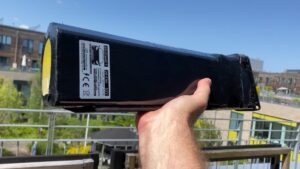

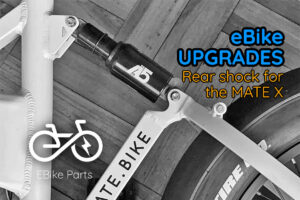
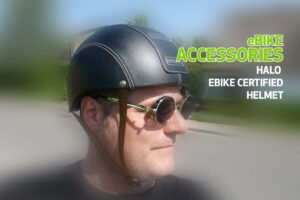
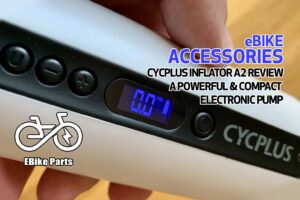
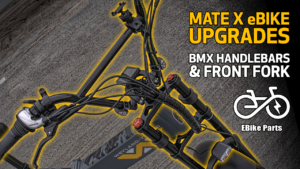
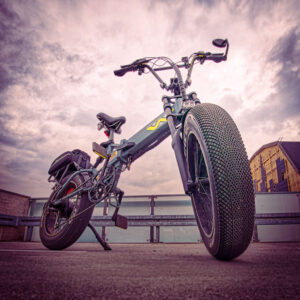
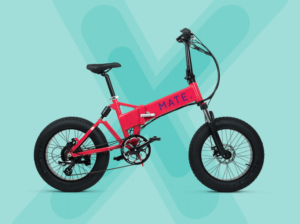
2 Comments
This is a super helpful article, thanks! eFatbikes are an urban transport revolution IMO – so versatile in terms of terrain/ load carrying/ passengers etc. However their weight and therefore propensity to flats, and the relative pain of repairing these flats roadside compared to a conventional cycle, is a bit of a “thorny” issue I’m finding.
Couple of quick questions: The Mr Tuffy 4” liners you refer to I can only see sold for 26-29” wheels. Did you cut these down, or did you find them specifically for 20” wheels?
My bike (Knaap AMS) currently has 4.25” wide road tyres. I ride mainly on tarmac with short stretches of gravel. I’m assuming 4” liners and/or replacement tyres should be compatible with my rims. Although I do see that Mr Tuffy liners also come in a 3XL width for 4.1-5” tyres. Which did you go for?
Cheers
Hi! Glad you found the article useful.
In answer to your questions: Mr. Tuffy 4XL fits 26” tires as it’s quite long. If you watch the tire change video, you’ll see I wrap the excess length of the liner around an extra time. It’ll simply provide an extra layer of protection. Some cut it, but that might cause a noticeable bump where it’s double layered if the overlap is too short. Also there’s a chance of so-called “pinch punctures” where the tube squeezes in between the seam or gap. Just wrap it 🙂
The liner will fit 4 to 4.5” wide tires, no problem.
Comments are closed.